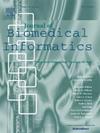Navigating regulatory challenges across the life cycle of a SaMD
IF 4.5
2区 医学
Q2 COMPUTER SCIENCE, INTERDISCIPLINARY APPLICATIONS
引用次数: 0
Abstract
Objective
Software as medical devices (SaMDs) have become part of clinical practice and the management of the development and control processes of the documentation associated with them are an integral part of many medical realities. The European Regulation, MDR (EU) 2017/745, introduces a classification rule (rule 11, Annex VIII) specifically for software, which provides more explicit requirements than in the past, leading to classification of many software to higher risk and therefore to more complex certification processes. In this context, planning and awareness of possible regulatory strategies and related standards are fundamental for the key stakeholders, but this complex landscape can be perceived as fragmented. The aim of this work is to provide an amalgamated overview of how the current EU normative framework integrates into the various phases of the life-cycle of a medical device software, trying to ensure its safe and effective development.
Methods
In addition to the MDR, the main normative references relevant to the medical device software sector were taken into consideration. Specifically, the IEC 62304 standard clarifies the main processes of the software life-cycle, including the analysis of problems and changes, and the IEC 82304 standard completes its management by addressing activities relating to post-market phases and requirements. In addition, the various steps include also key points such as risk identification and control (ISO 14971), design, implementation and validation of usability requirements (IEC 62366) and in general the quality of the context in which the software is developed and maintained (ISO 13485). The application of these standards can support the activities of the various stakeholders and facilitate evidence of compliance with the regulatory requirements by MDR.
Results
Based on the software life cycle, a mapping of the requirements from the entire normative framework analyzed over the various phases was implemented.
Conclusions
A detailed and integrated picture of the regulatory context behind the life cycle of a SaMD has been provided: this can facilitate the implementation of a balanced and effective approach, including key aspects, such as risk management and usability processes, and ensuring safety for the end user.
在SaMD的整个生命周期中应对监管挑战
软件作为医疗器械(samd)已经成为临床实践的一部分,与之相关的文件的开发和控制过程的管理是许多医疗现实的一个组成部分。欧洲法规MDR (EU) 2017/745引入了专门针对软件的分类规则(规则11,附件VIII),该规则提供了比过去更明确的要求,导致许多软件被分类为高风险,因此需要更复杂的认证过程。在这种情况下,对可能的监管策略和相关标准的规划和认识对关键利益相关者来说是至关重要的,但这种复杂的格局可能被视为碎片化的。这项工作的目的是提供当前欧盟规范框架如何整合到医疗设备软件生命周期的各个阶段的综合概述,试图确保其安全和有效的发展。方法除MDR外,参照医疗器械软件行业相关的主要规范文献。具体来说,IEC 62304标准阐明了软件生命周期的主要过程,包括对问题和变化的分析,IEC 82304标准通过解决与上市后阶段和要求相关的活动来完成其管理。此外,各种步骤还包括关键点,如风险识别和控制(ISO 14971),可用性要求的设计,实施和验证(IEC 62366),以及软件开发和维护环境的总体质量(ISO 13485)。这些标准的应用可以支持各种利益相关者的活动,并促进MDR遵守监管要求的证据。结果基于软件生命周期,实现了在各个阶段分析的来自整个规范框架的需求映射。提供了SaMD生命周期背后的详细和综合的监管背景:这可以促进平衡和有效方法的实施,包括关键方面,如风险管理和可用性流程,并确保最终用户的安全。
本文章由计算机程序翻译,如有差异,请以英文原文为准。
求助全文
约1分钟内获得全文
求助全文
来源期刊

Journal of Biomedical Informatics
医学-计算机:跨学科应用
CiteScore
8.90
自引率
6.70%
发文量
243
审稿时长
32 days
期刊介绍:
The Journal of Biomedical Informatics reflects a commitment to high-quality original research papers, reviews, and commentaries in the area of biomedical informatics methodology. Although we publish articles motivated by applications in the biomedical sciences (for example, clinical medicine, health care, population health, and translational bioinformatics), the journal emphasizes reports of new methodologies and techniques that have general applicability and that form the basis for the evolving science of biomedical informatics. Articles on medical devices; evaluations of implemented systems (including clinical trials of information technologies); or papers that provide insight into a biological process, a specific disease, or treatment options would generally be more suitable for publication in other venues. Papers on applications of signal processing and image analysis are often more suitable for biomedical engineering journals or other informatics journals, although we do publish papers that emphasize the information management and knowledge representation/modeling issues that arise in the storage and use of biological signals and images. System descriptions are welcome if they illustrate and substantiate the underlying methodology that is the principal focus of the report and an effort is made to address the generalizability and/or range of application of that methodology. Note also that, given the international nature of JBI, papers that deal with specific languages other than English, or with country-specific health systems or approaches, are acceptable for JBI only if they offer generalizable lessons that are relevant to the broad JBI readership, regardless of their country, language, culture, or health system.
 求助内容:
求助内容: 应助结果提醒方式:
应助结果提醒方式:


